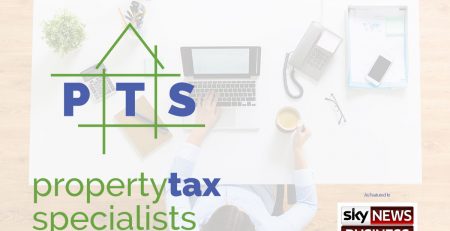The Essential Guide to Self Managed Super Fund Property Investment
Did you know that you could use your self-managed superannuation fund (SMSF) as a vehicle to purchase an investment property?
It’s become an increasingly popular option for many SMSF members because of the various tax benefits.
What’s more, you can now borrow money to purchase your self-managed super fund property.
So, if you’re looking at buying an asset with your SMSF, then this is the guide for you. We’ll take a detailed look at purchasing property through an SMSF, including borrowing money if needed.
And finally, we’ll discuss some of the tax benefits that come from using this type of investment vehicle.
What Are Self-Managed Superannuation Funds?
The underlying principle for using a self-managed super fund can be summarised by these two words: control and responsibility.

An SMSF is a private superannuation fund that the members manage themselves rather than having the superannuation fund providers manage it on their behalf.
SMSFs also differ from industry or retail-based super funds in that all of the members act as trustees.
So, SMSFs are a great way to take control of your retirement.
You’re in the driver’s seat, and you can make decisions about your retirement savings, what investments you put your money into and how much risk you’re willing to take on.
How Do SMSFs Work?
Currently, each SMSF can have up to four members, or trustees, in the fund who will decide how the super fund operates and where to invest its funds.
For example, the trustees can use the SMSF as a vehicle to purchase investment properties, provided that they meet all SMSF legal requirements.
So, with freedom comes great responsibility to ensure that the SMSF complies with the law.
How Does an SMSF Property Investment Strategy Work?
The most important consideration when it comes to investing SMSF funds in residential property is that the investment strategy must be for the benefit of each member and must follow strict superannuation rule guidelines.
To comply with these strict guidelines, the investment property must:
- satisfy the “sole purpose test” – in other words; the SMSF must be set up for solely providing retirement benefits;
- not be purchased from any fund members or member relatives;
- not be a place of residence for fund members or related parties; and
- not be a rented residence for fund members or related parties.
Example:
Laura and Zoe are members of an SMSF, and they’re currently in the market to purchase a residential property investment.
Their brother, Zachary, who isn’t a member of the SMSF, is currently selling his apartment in Sydney.
Laura and Zoe considered it possible to buy property from Zachary because it’s in a great location and is on the market for a relatively fair price.
However, after consulting with their financial advisor, they were informed that they couldn’t buy property from Zachary because buying a relative’s residential property violates SMSF compliance rules.
While the SMSF compliance guidelines apply to both residential and commercial property, there is a degree of flexibility in how you use your self-managed super fund commercial property.
For example:
If Laura and Zoe ran a small business together and were shopping around for investment properties, they could consider a commercial space.
This is because SMSF guidelines would allow them to rent the SMSF commercial property as premises from which they can conduct their business operations.

What Else Should You Consider?
It’s important to understand that SMSF property sales often attract more fees and charges than the sale of property not held by an SMSF.
So before signing up with any broker or agent, it’s vital to get an idea about all the extra costs there might be, including:
- legal expenses;
- stamp duty;
- property management expenses; and
- bank fees.
Can You Borrow Money To Purchase an SMSF Property Investment?
Yes, self-managed super funds can borrow funds to purchase investment properties.
However, to protect the retirement interests of the SMSF members, there are (more) strict guidelines you need to follow.
To borrow money for your self-managed super fund property, you need to establish a limited recourse borrowing arrangement (LRBA).
According to the limited recourse borrowing arrangement, to protect the other SMSF assets or “limit the lender’s recourse,” a separate trust must be set up.
The separate trust holds the property investment outside of the SMSF structure but still on their behalf. But, all the investment property’s income and expenses will still go through the superfund’s bank account.
If the SMSF defaults on the loan repayments, the lender is only authorised to take back the separate property trust and nothing else held by the SMSF.
Borrowing Criteria for SMSF Loans
Lenders are generally more reluctant to lend money to an SMSF because the purpose of super funds is to save, not create more debt.
However, because the debt is used to advance investment savings, they’ll consider lending to an SMSF with a fund balance of at least $200,000.
Because your loan repayments are directly transferred from your SMSF funds, you’ll need to show that the fund has sufficient liquidity or cash flow to meet those repayments.
The borrowed money can only be used to:
- purchase a self-managed super fund property;
- capitalise interest; and
- pay for repairs and maintenance.
This means you can’t borrow funds to complete any renovations on the investment property.

What are Some Tax Benefits for an SMSF Investment Property?
One of the most common reasons investors opt to buy self-managed super fund property is that they can benefit from tax concessions.
For example, you’re only required to pay 15% income tax on the rental income from your SMSF property. So, if you personally fall into a higher income tax bracket and more than 15% income tax, this would be a smart tax strategy.
What’s more, once you retire and reach the pensions stage in your fund, any rental income or capital gains resulting from SMSF property will be completely tax-free.
And, if you borrow money to buy your self-managed super fund property, then the fund qualifies to claim that interest as a tax-deductible expense.
Lastly, SMSF investment properties held in the fund for longer than 12 months qualify for a capital gains tax (CGT) discount on the sale of the property, and your CGT liability will only be 10%.
Key Takeaways
One of the benefits of being in control of your SMSF is that you can use it as a vehicle to buy an investment property.
The ability to borrow money and the various tax breaks available make buying a self-managed super fund property an attractive investment opportunity.
But, there are a handful of complex compliance rules and regulations that you need to keep on top of.
So, you’ll need to seek professional advice to help you weigh up the pros and cons.
If you decide to go the SMSF investment property route, we also suggest that you consult a tax specialist to help you make the most of those tax benefits available to you.
At Property Tax Specialists, our primary focus is helping property investors maximise their opportunities and protection while legally minimising their tax liabilities.
To discuss any matter relating to self-managed super fund properties and arrange your affairs for minimum tax, get in touch today.
DISCLAIMER: This information has been prepared without taking into account your objectives, financial situation or needs. Because of this, you should, before acting on this information, consider its appropriateness, having regard to your objectives, financial situation or needs.
Amir Ishak is a Limited Authorised Representative 1269908 of Merit Wealth Pty Ltd, Australian Financial Services Licence 409361, ABN 89 125 557 002


